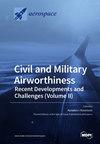受周期性来流扰动的低压涡轮级联中的端壁流动特性分析,第 2 部分:使用压敏涂料进行非稳态叶片表面测量
IF 2.1
3区 工程技术
Q2 ENGINEERING, AEROSPACE
引用次数: 0
摘要
以 30 kHz 的采样率进行了非稳压敏涂料(i-PSP)测量,以研究在发动机相关的高速和低 Re 条件下运行的低压涡轮级联内的近内壁叶片吸入表面流动。研究重点是以 500 Hz 频率周期性进入的条状湍流与二次流和叶片吸入表面的相互作用。研究结果建立在本两部分出版物第一部分所介绍的大量 PIV 测量基础之上,这些测量捕捉到了整个叶片通道中湍流的 "负喷流效应"。表面压力分布结合 CFD 分析了流动拓扑结构,如通道涡流分离线。通过分析锁相 PIV 和 PSP 测量数据,我们发现了由湍流引起的空间为负,时间为正的移动压力梯度。此外,还比较了基于 FFT 和 SPOD 的两种频率滤波方法,并利用这两种方法将 678 Hz 附近的压力波动峰值与分离气泡振荡联系起来。本文章由计算机程序翻译,如有差异,请以英文原文为准。
Characterization of the Endwall Flow in a Low-Pressure Turbine Cascade Perturbed by Periodically Incoming Wakes, Part 2: Unsteady Blade Surface Measurements Using Pressure-Sensitive Paint
Unsteady pressure-sensitive paint (i-PSP) measurements were performed at a sampling rate of 30 kHz to investigate the near-endwall blade suction surface flow inside a low-pressure turbine cascade operating at engine-relevant high-speed and low-Re conditions. The investigation focuses on the interaction of periodically incoming bar wakes at 500 Hz with the secondary flow and the blade suction surface. The results build on extensive PIV measurements presented in the first part of this two-part publication, which captured the ’negative-jet-effect’ of the wakes throughout the blade passage. The surface pressure distributions are combined with CFD to analyze the flow topology, such as the passage vortex separation line. By analyzing data from phase-locked PIV and PSP measurements, a wake-induced moving pressure gradient negative in space and positive in time is found, which is intensified in the secondary flow region by 33% with respect to midspan. Furthermore, two methods of frequency-filtering based on FFT and SPOD are compared and utilized to associate a pressure fluctuation peak around 678 Hz with separation bubble oscillation.
求助全文
通过发布文献求助,成功后即可免费获取论文全文。
去求助
来源期刊

Aerospace
ENGINEERING, AEROSPACE-
CiteScore
3.40
自引率
23.10%
发文量
661
审稿时长
6 weeks
期刊介绍:
Aerospace is a multidisciplinary science inviting submissions on, but not limited to, the following subject areas: aerodynamics computational fluid dynamics fluid-structure interaction flight mechanics plasmas research instrumentation test facilities environment material science structural analysis thermophysics and heat transfer thermal-structure interaction aeroacoustics optics electromagnetism and radar propulsion power generation and conversion fuels and propellants combustion multidisciplinary design optimization software engineering data analysis signal and image processing artificial intelligence aerospace vehicles'' operation, control and maintenance risk and reliability human factors human-automation interaction airline operations and management air traffic management airport design meteorology space exploration multi-physics interaction.
 求助内容:
求助内容: 应助结果提醒方式:
应助结果提醒方式:


